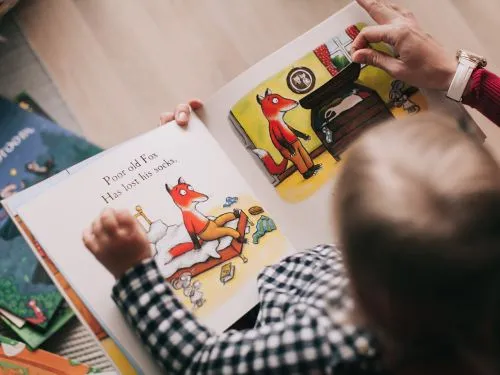Cultivating a love of reading in young children is one of the most impactful investments a parent, caregiver, or educator can make. For many children in 2025, reading for pleasure is at a low ebb; just one in three children aged 8 to 18 says they enjoy reading in their free time. That means inspiring interest, building habits, and making books appealing are more important than ever. This article offers a detailed, step‑by‑step guide to encouraging young kids to read books, supported by the latest research, practical examples, and recommended tools and books that work in real homes.
Why Early Reading Matters
Reading to young children is not only about literacy. It supports language development, emotional awareness, confidence, and later academic success. In fact, regular read‑aloud sessions activate parts of the brain linked to language and comprehension. A 2025 report from the National Literacy Trust found that children who enjoy reading in their free time are far more likely to have above‑average reading skills. So the goal is not just to get kids reading words but to build genuine enjoyment and habit.

How To Inspire Kids To Read Books
1. Create A Reading‑Friendly Environment
A child’s environment matters enormously. Make books visible, accessible, and part of daily life.
Provide Easy Access To Books
Keep a selection of age‑appropriate picture books, board books, or early readers on low shelves or baskets where children can reach them. Studies show children are more likely to pick up books when they are within arm’s reach.
Libraries and free little libraries in community settings also boost access and exposure. For example, initiatives like Let’s Read Today provide free children’s shelves in public places.
Model Reading Behaviour
Children copy what they see. When parents read books, magazines, or even recipes in the family space, children learn that reading is normal and enjoyable. Establish a routine; perhaps 10 to 15 minutes of reading every day. The evidence shows that consistent read‑aloud time builds vocabulary and comprehension.
2. Choose Books That Capture Young Minds
Age‑Appropriate Formats
For toddlers, board books with sturdy pages, bold images, and repetitive text help build early literacy. As children grow, mix in early chapter books and graphic novels to keep things fresh. The 2025 data shows that comics and graphic novels remain popular among children.
Link Books With Interests
Children are far more likely to read when the subject matches their interests. Be it animals, cars, space, fantasy, or everyday life. The 2025 UK research emphasised that reading becomes meaningful when it aligns with what the child already loves. Choose books tied to a film, TV show, or hobby to create additional appeal.
Include Variety And Choice
Allowing children to choose their own books cultivates autonomy and engagement. Including non‑fiction, magazines, or even audiobooks can diversify their experience. The aim is to build habit and joy, not limit reading to a narrow set of titles.
3. Make Reading Interactive And Fun
Read Aloud With Expression
Vary your tone, use different voices for characters, point to illustrations, and discuss what’s happening. A recent study found that interactive read‑alouds support children’s narrative development and comprehension.
Encourage Storytelling And Prediction
Use Book‑Based Activities
Link books to drawing, role‑play, or crafts. If you read a story about pirates, build a ship from cardboard. Offer bookmarks and let the child track their own reading. This kind of multi‑sensory experience supports enjoyment and memory.
4. Establish A Regular Routine
Routine builds habit. Just like brushing teeth or going to bed, reading daily helps it become automatic.
Set A Fixed Time
Whether it’s before bed or after dinner, having a consistent reading time helps children associate books with comfort and predictability. The research suggests that even 10 minutes of daily reading makes a meaningful difference.
Create A Comfortable Reading Space
Design a cosy corner with cushions, soft lighting, and a few favourite books. This gives reading a special status. They aren’t just reading anywhere; they’re reading in their “reading spot.”
Build Reading Milestones
Celebrate finishing a book or reaching a reading goal with simple rewards, extra story time, choosing the next book, or stickers on a chart. Such positive reinforcement strengthens motivation.
5. Leverage Technology And Digital Formats
In 2025, the concept of reading for pleasure is shifting to include screens, audio, and interactivity. The data shows digital formats like audiobooks and online reads can engage children who might not pick up a print book.
Use Audiobooks And Read‑Aloud Apps
Audiobooks help children hear language, pace, and intonation. They can serve as a gateway into print reading later. Combine an audiobook with a print edition so children can follow along with the pages.
Explore Interactive Story Apps
Interactive or augmented‑reality storybooks can boost interest, especially for reluctant readers. Research shows that digital story apps with visual and auditory stimuli can deepen engagement.
Balance Screen Use With Print
The goal is not to replace printed books entirely but to offer reading in multiple modes. Offer choice between devices, printed stories, and audio to keep reading inclusive and flexible.
6. Involve The Whole Family And Community
Reading habits are easier to maintain when the whole family or community values reading.
Read Together Across Generations
Sibling reading, grandparent reading, and shared family storytime help reinforce reading as a social activity. Research highlights that children read more when role models read regularly.
Connect With Libraries And Reading Events
Libraries, summer reading challenges, and book clubs provide structure and social reinforcement. Programs such as the UK’s Summer Reading Challenge show that fun reward‑based reading initiatives help maintain reading habits in holiday periods.
Encourage Peer Reading
Let children talk about books with friends, borrow books from neighbours, or join young readers’ groups at school or the library. Shared reading experiences boost motivation and create positive peer pressure.
Recommended Books And Products For Young Readers
Here are a few well‑tested options to support your efforts:
- The Very Hungry Caterpillar by Eric Carle – A classic board book with bold images and predictable patterns ideal for toddlers.
- Scholastic Early Readers Series – Affordable early chapter books that build confidence.
- Bookmoji App by Bookelicious – A fun digital platform launched in 2025 that uses avatars and personalised book recommendations to encourage kids to choose books they will love.
- Interactive Read‑Aloud Storytime Sets – Bundled audio + print sets for children learning to follow along and engage with text.
- Library Micro‑Memberships or Book Box Subscriptions – Monthly book boxes tailored to a child’s interests that arrive at home, making book selection exciting.
Each of these choices supports different strategies: interest‑matching, visual appeal, digital engagement, or reading habit reinforcement.
Addressing Common Challenges
Even with the best intentions, encouraging reading has its hurdles. Here’s how to tackle common issues.
The Reluctant Reader
If a child avoids books, start by following their interests, such as sports, animals, or space. Choose high‑interest, low‑difficulty books to build success. Don’t pressure; offer options and allow the child to lead.
Competing Screen Time
With digital devices capturing attention, set clear times when a book is the “screen alternative.” Offer reading before device use, or make it an option to unlock screen time. Current research shows that reading for pleasure is under threat and needs proactive support.
Busy Schedules
When adult time is limited, use short reading bursts, just five or ten minutes at a time, repeatedly to build a habit. Even listening to audiobooks in the car counts. Consistency matters more than length.
Finding Age‑Appropriate Books
Use tools like library staff, reading‑level websites, and platforms like Bookelicious to discover books that match age and interest. Children often enjoy content above their reading level when it aligns with their passions.
Monitor Progress And Celebrate Success
Tracking progress helps children feel pride in their reading journey.
- Create a reading chart or sticker tracker.
- Let children choose books for a “book report” in which they draw or retell the story.
- Share their thoughts with friends or family.
- Visit the library for a “reader badge” or certificate event.
Reading milestones help reinforce the idea that “I am a reader.” That self‑identity is powerful and motivates further reading.
The Role Of Educators And Schools
Schools play a major role in cultivating a love of reading. The 2025 research emphasises the need to align reading to children’s interests and existing media habits. Educators can support this by offering diverse book choices, favourable reading spaces, and partnerships with parents to extend reading habits at home.
Building Lifelong Reading Habits in Small Children
Encouraging small children to read books is not a one‑time effort. It is a journey of building context, interest, habit, and access. The research from 2025 makes it clear: reading becomes meaningful when it connects with what children already love and is consistently supported.
With the right environment, the right titles, engaging read‑aloud practices, and inclusive access to both print and digital formats, children can grow into lifelong readers. These habits serve them not only academically but also emotionally and socially. Reading is about more than words. It is about curiosity, connection, and exploration.
By making books part of everyday life, celebrating reading milestones, and adapting strategies to your child’s age and interests, you set the foundation for a lifetime of reading and discovery.







